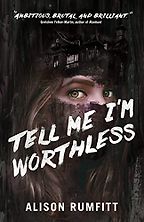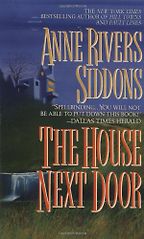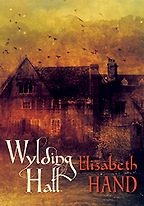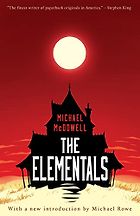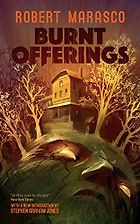Thank you for this list of horror novel recommendations, all with a haunted house theme. Before we talk about the books themselves, could you first tell us a little about the pull of the haunted house? What does the persistence of this trope reveal about the human psyche?
I think the haunted house is the perfect space for some kind of self-confrontation or discovery. The home is a safe space. It’s where we can be fully ourselves without having to put on the various fronts we adopt for the outside world. You don’t have to be friendly at home, or professional, or interesting. You get home and you slough all of that stuff off and just exist.
A haunting is an intrusion on the home by some unwanted or unexpected presence. So it makes sense that writers choose to work with the haunted house as a means of exploring complicated thoughts and feelings we have about ourselves and our lives. Haunted houses make us ask questions. What is haunting us? How do we react, versus how do we think we ought to react? How do events change us? How much control do we have over the situation, and by extension, ourselves?
“Writers choose to work with the haunted house as a means of exploring the complicated feelings we have about ourselves”
As a reader, I think the haunted house is one of the most persistently frightening concepts. I don’t believe in ghosts or demons, but the idea of a supernatural force inside my home is terrifying. You can’t escape from home. You are your home!
Absolutely. Shirley Jackson’s The Haunting of Hill House is perhaps the ur-text in this genre. But I got the feeling that you wanted to look more widely, and recommend lesser-known books. Is that a fair assumption?
I think The Haunting of Hill House is one of the greatest novels ever written, let alone horror novels or haunted house novels. But whenever I come across a list of horror novels, the same names are always mentioned. If you haven’t read Hill House, I highly recommend you do. Every book on this list was almost certainly influenced by it in some way. But I wanted to create a reading list that might offer some readers the opportunity to discover something different because that’s what I want when I’m browsing for book recommendations.
That makes a lot of sense. The first haunted house horror novel you’ve chosen to recommend is Alison Rumfitt’s Tell Me I’m Worthless. Could you tell us about it, and why you recommend it?
Tell Me I’m Worthless tells the story of two friends, Alice and Ila, in the aftermath of a night spent together in a haunted house. Alice is transgender, and Ila is a ‘gender critical’ feminist, so it’s a complicated relationship that gives the reader lots to think about. Why are, or were, they friends? What happened? Who do I sympathise with and why? But at its core is this terrifying house, Albion, which is essentially haunted or possessed by a particular brand of British fascism.
The book is a very timely exploration of the social fabric of the United Kingdom today, but it’s also a very visceral, unforgiving straight-up horror novel, and this is a winning combo for me.
This is a book rooted in contemporary political discourse. Is it common, do you think, for horror novels to function as allegories, or otherwise offer social analysis? Does this tie in with your own debut novel, Absorbed?
Yes, I think the horror genre is the perfect playground to work through all sorts of political, social, and personal ‘issues’. Horror is, or can be, a very open and flexible genre. Anything can happen, from the kind of violence we see every day on the news and in our personal lives, right through to the completely unimaginable and impossible. It’s a breeding ground for metaphor.
Absorbed is about a woman who physically absorbs her boyfriend into her own body. It’s about the complexities of a long-term relationship, of losing your individual identity and melding with another person. The body horror-ish concept felt perfect for this story because the love the main character feels for her partner and the fear of losing him is so visceral. These aren’t emotions she can readily access and work through; they’re in her bones.
Get the weekly Five Books newsletter
I want to add that I don’t believe creators working in the horror genre have any responsibility to incorporate social and political themes into their work, and I don’t think readers need to constantly worry about ‘getting’ the subtext. Works of horror can stir up all kinds of feelings and emotions, and I think it’s enough just to let those feelings wash over us, take what we can, and enjoy the ride.
That’s an interesting way of thinking about it. I’ll muse on it, thank you. Next up, we have Anne Rivers Siddons’s The House Next Door. First published in 1978, it’s a haunted house book with a cult following. Could you tell us more?
I first heard about this book through an interview with Carmen Maria Machado. The House Next Door is told from the perspective of Colquitt (‘Col’) Kennedy who lives with her husband Walter in a nice, peaceful suburb in Atlanta. The peace is disturbed when a modern home goes up in the vacant lot next door. Soon enough, strange things start happening, and Col and Walter find themselves trying to protect the house’s inhabitants and their neighbourhood.
The House Next Door manipulates its well-to-do suburban occupants into scandalous acts with tragic consequences. I don’t want to spoil it, but at times it’s like a scary soap opera with all these big, sordid events taking place in peaceful suburbia.
It feels a bit unusual, in that it features a modern, new-build house—rather than an old, decrepit mansion with a tragic history. What does that add?
The assumption that all haunted houses are old implies that haunting can only result from past events or deaths in that location. It implies that hauntings have reason, that they are caused by ghosts or spirits or memories conjured by tragic events. But isn’t it scarier if there is no reason, or the reason is something you couldn’t possibly have anticipated?
Five Books interviews are expensive to produce. If you're enjoying this interview, please support us by donating a small amount.
In The House Next Door, the house is this bold, modern building that pops up in an affluent, middle-class neighbourhood that’s very set in its ways. With this new house and the way it manipulates its inhabitants, the local residents of this sleepy little suburb are forced to confront the upsetting events suburbia is supposed to protect them from.
Could you talk us through your next haunted house horror book recommendation: Michael McDowell’s 1981 novel The Elementals?
This book’s haunted house is a holiday home on Alabama’s Gulf Coast. It’s less thunderstorms and flickering lights (although there are some of those) and more sweltering heat and ominous piles of sand.
“Horror is the perfect playground to work through all sorts of political, social, and personal ‘issues.’ It’s a breeding ground for metaphor”
Following the death of the matriarch, and a rather bizarre funeral, the Savage and McCray families take some time to visit their summer homes. The homes sit on either side of a vacant house buried in sand. Of course, the house isn’t entirely vacant, and the youngest family member can’t help herself from awakening the forces within…
It’s interesting that this haunted house book, like The House Next Door, depicts a clash of Southern manners and sensibilities with horror. What does this add?
There’s something so compelling about the combined high drama of social expectations and traditional horror imagery. I love these very ‘proper’ characters. These are polite people, wealthy people, they organise fundraisers for charities and political campaigns. Bad things aren’t supposed to happen to them. It’s entertaining to see how these people who are so ill-prepared for anything out-of-the-ordinary will adapt, and what they will reveal about their true characters.
Next on our list of haunted house book recommendations we have Robert Marasco’s Burnt Offerings, first published in 1973. What’s it about, and why do you like it so much?
Burnt Offerings offers another example of a haunted house that changes its occupants. It manipulates their behaviour to serve itself.
Marion and Ben rent an enormous country home for the summer, but there’s a catch. The elderly brother and sister duo who own the property will leave behind their even more elderly mother, and Marion will need to take care of her. When they arrive at the house, Marion takes a lunch tray up to the mother who does not answer her door. The mother looms as an unseen presence for most of the book. Why doesn’t she talk? Why doesn’t she come out of her room? Why is Marion spending more and more time by the old woman’s door? Does the old woman even exist?
What’s so frightening is the extent to which Marion becomes obsessed with the house. Terrible things happen, and as the situation worsens and her family faces grave danger, Marion only becomes more committed to the house.
I’ve read that Stephen King’s The Shining and Jay Anson’s The Amityville Horror are “both basically rewrites of Marasco’s book.” Would you agree?
No, I don’t think that’s fair. Obviously, the books have a lot in common, and Stephen King himself has said he was influenced by Burnt Offerings, but they’re not the same book. I could read one after the other and enjoy each in its own right. It’s been a while since I read The Amityville Horror, so I won’t comment on that one!
I think that might finally bring us to Elizabeth Hand’s Wylding Hall, published in 2015. It features a folk rock band holing up in a country house to finish a new album. Then what?
The story is told in the style of a series of documentary-style interviews with members of the band telling what happened the summer they stayed in Wylding Hall: the summer their lead singer, Julian, disappeared, never to be seen or heard of again.
Get the weekly Five Books newsletter
The story is revealed in slivers told from the perspectives of different people, not all of whom were present and/or sober at the time. The novel includes some creepy and memorable motifs including a room full of dead birds, a library nobody can find, a mysterious girl, the eerie tune that Julian keeps on humming.
It’s a book that creates more mystery than it solves and I love that.
Absolutely. It strikes me that you have to be comfortable with uncertainty and ambiguity to write this kind of work. But is it frightening to be a horror writer? Do you spend a lot of time thinking up scenarios that frighten you to your core?
I wish I could say yes, but in truth, my own ideas don’t really scare me. For me, it’s more about finding a particularly uncomfortable or disquieting thought or feeling and really pressing on it to see what else comes up. Sometimes it can be quite distressing, but often it’s good fun, taking something awful and asking yourself, How far can I go with this?
Interview by Cal Flyn, Deputy Editor
October 29, 2022
Five Books aims to keep its book recommendations and interviews up to date. If you are the interviewee and would like to update your choice of books (or even just what you say about them) please email us at [email protected]


